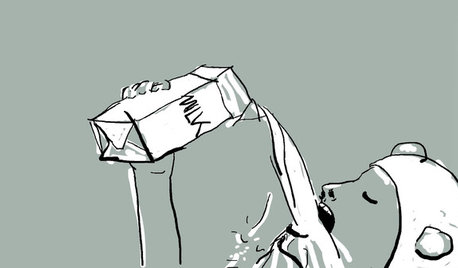natto
gringojay
15 years ago
Related Stories

FUN HOUZZWhat You Do When There’s No One Around
Ice cream binges, air guitar concerts, napping in the closet. Houzzers worldwide disclose their quirky secret indulgences
Full StoryMore Discussions
Natto, Bacillus subtilis, var. natto, grown on soy beans can be considered as a primitive herb.
It is useful, among other things, for acute & chronically intractable loose stool evacuation.
I have seen children with diarrhea of several days duration eat Natto beans on a salt cracker return to normal evacuation.
Adults with chronic "loose" stool respond well too, usually a bit slowly. These are individuals who have been unsuccessfully medicated, with both over the counter & prescribed treatments; including the gamut of popular "pro-biotic" supplements.
With adults there are variables to acknowledge; sphincter tone, medication side effects, psychological factors & possible pathology. These details are not being discussed here.
Counter-indication for use of Natto is for those taking blood thinner medication, & is also not recommended for those with the type of allergy to anchovies.
You can make Natto yourself quite easily from powdered Japanese spore culture & boiled soy beans. It keeps refrigerated well.

rusty_blackhaw
gringojayOriginal Author
Related Professionals
Fort Lee Landscape Architects & Landscape Designers · Glassmanor Landscape Architects & Landscape Designers · Woodinville Landscape Architects & Landscape Designers · Bridgeport Landscape Contractors · Fort Payne Landscape Contractors · Kaneohe Landscape Contractors · Norwalk Landscape Contractors · Rockwall Landscape Contractors · Roswell Landscape Contractors · Saint George Landscape Contractors · Seymour Landscape Contractors · South Hackensack Landscape Contractors · Del Aire Carpenters · North Richland Hills Carpenters · San Jose Roofing & Guttersrusty_blackhaw
gringojayOriginal Author
rusty_blackhaw
gringojayOriginal Author
rusty_blackhaw
gringojayOriginal Author
apollog
rusty_blackhaw
gringojayOriginal Author
rusty_blackhaw
silversword
gringojayOriginal Author
gringojayOriginal Author
luckygal
apollog
gringojayOriginal Author
rusty_blackhaw
gringojayOriginal Author
rusty_blackhaw
gringojayOriginal Author
gringojayOriginal Author
rusty_blackhaw
gringojayOriginal Author
apollog
rusty_blackhaw
gringojayOriginal Author
apollog
gringojayOriginal Author
gringojayOriginal Author